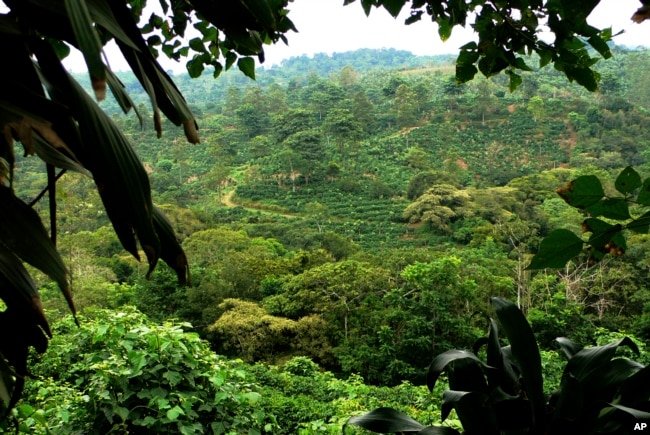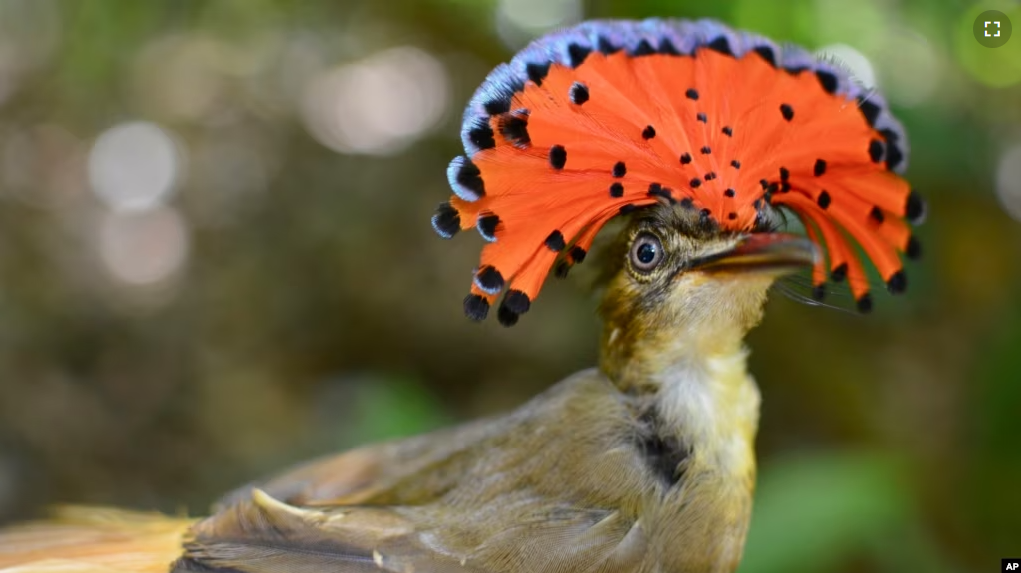Small farms with natural trees and forests that block sunlight can provide a refuge for some bird populations, a study in Costa Rica found.
For 18 years, bird expert James Zook has been collecting records on nearly 430 kinds of tropical birds found on farms and natural forests in the Central American country.
While birds do best in natural rainforests, Zook said some species usually found in forests can establish populations in “diversified farms.” Diversified farms are farms that contain areas similar to a natural forest environment.
“How you farm matters,” said Nicholas Hendershot. He is a Stanford University environmental scientist. He helped write the study published recently in Proceedings of the National Academy of Sciences.
“In these diversified farms, you see growth over the long term in bird species with specialized needs,” Hendershot said. These specialized needs include safe and protected areas from the sun for birds to build their homes and different kinds of food sources.
That kind of farming is very different to industrial agriculture or agriculture where only one crop like pineapple or bananas are planted, he said.
Natalia Ocampo-Penuela is a University of California, Santa Cruz environmental scientist who was not involved in the study. She said the findings may seem to make sense without research. But she added that it is very rare to have detailed data over a long time from tropical areas to show that diversified farming can support some forest bird populations.

“With 18 years of data, you can show the species is persisting in that area, not simply passing by,” she said.
Of the 305 species found in diversified farms, 75 percent showed stable or growing populations over the time of study. These include birds like the collared aracari as well as several members of the manakin family – colorful birds known for their complex mating dances.
Ruth Bennett is a scientist at the Smithsonian Migratory Bird Center. She was not involved in the research. She said, “It’s a huge contribution to have documented that some birds aren’t just going there, but staying there and populations are growing,”
Still, such safe environments, called habitats, do not balance out overall population losses from the creation of large industrial farms from natural forests, the writers warned. Zook compared a large pineapple farm to a “bird desert.”
Increasingly, scientists say saving species will require paying attention to areas affected by humans, not just untouched areas.
Ocampo-Penuela said modern efforts to save species have to happen not only inside protected areas, but also within agricultural areas and even cities. She said these efforts have to happen where there is at least a possibility that some species could live there.
I’m Greg Stachel.
Christina Larson reported this story for The Associated Press. Gregory Stachel adapted the story for VOA Learning English.
______________________________________________
Words in This Story
the tropics – n. the part of the world that is near the equator where the weather is very warm
species – n. a group of animals or plants that are similar and can produce young animals or plants
persist – v. to continue to do something or to try to do something even though it is difficult or other people want you to stop
stable – adj. in a good state or condition that is not easily changed or likely to change
contribution – n. something that is done to cause something to happen
